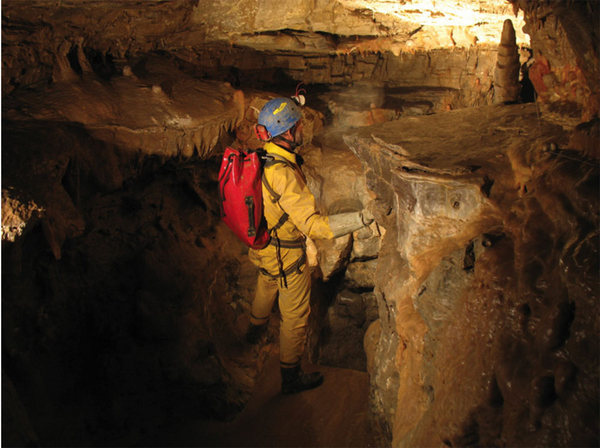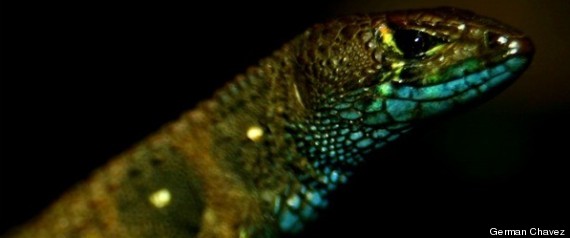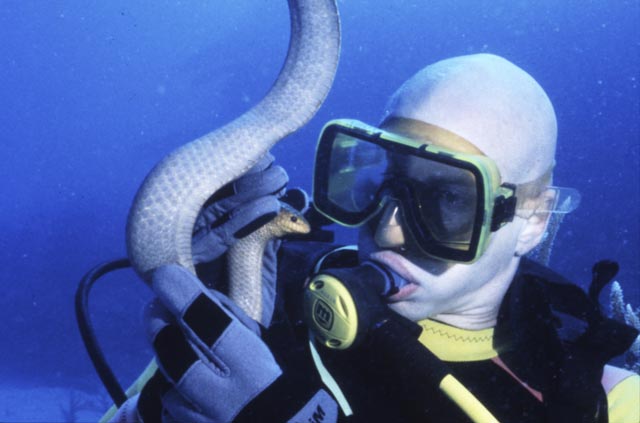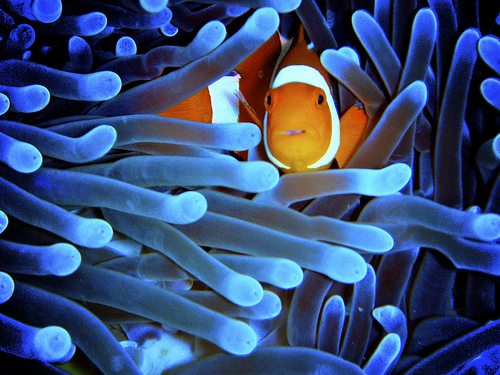It might seem like we live in a small world and know quite a bit about it and the creatures that live here. But it turns out that even though we’ve been looking for suite some time, we can still find completely new animals crawling around our feet that no one has ever seen before. This year alone (2012) several new species have already been discovered, and it’s only the end of February.
Deepest Dwelling Land Animal
Scientists searching for life in Krubera-Voronja, the deepest known cave in the world in Abkhazia near the Black Sea which goes down to 2191 meters below the surface have found a new wingles insect, or arthropod (an invertebrate animal having an exoskeleton (external skeleton), a segmented body, and jointed appendages), called Plutomurus ortobalaganensis.

In the dark abyss of the world’s deepest known cave lurks a newfound species of primitive eyeless insect, one that researchers are calling the deepest land animal ever found.
“P. ortobalaganensis has no eyes and long antennae,” said researcher Enrique Baquero, a taxonomist at the University of Navarre in Spain. These features are typical of troglobionts, or cave dwellers. “Nevertheless, it has pigment, usually absent in animals that are strict troblobionts.” (The creature has a grayish body covered with darker spots.) [Our Amazing Planet]
Iridescent Cambodian Lizard
While this skink (lizzard species with small legs and snake like bodies) was first spotted two years ago, it was only recently that a herpetologist spotted one and was able to study it.

A new species of lizard with striking iridescent rainbow skin, a long tail and very short legs has been discovered in the rainforest in northeast Cambodia, conservationists announced. Scientists named the skink Lygosoma veunsaiensis to honour the Veun Sai-Siem Pang Conservation Area in Rattanakiri province where it was found, Conservation International (CI) said in a statement.
The new species is unusual because it has very short limbs and a tail that is much longer than its main body. Its skin has a refracting quality to the scales that creates a rainbow-like effect in sunlight, the group said. [Outcome Mag]
High Altitude Lizzard in the Andes
A new species of lizzard was found high in the Andes Mountains of South America. This was unexpected as lizzards are cold blodded and therefore assume the temperature around them. Humans are warm blooded which means our bodies create heat to keep us warmer than the air around us.

“During the day we didn’t find any, but at night we found several individuals, males and females, running and swimming in the stream,” Chávez told OurAmazingPlanet in an email. “That was a great moment for us.”
The home altitudes of P. montanicola are 3,300 feet (1,000 meters) higher — and therefore chillier — than areas frequented by its closest cousins.
“The reptiles here are amazing,” Chávez said. “And I can imagine more ‘lost places’ in the Andes where probably other new species live right now.”
New Venomous Australian Sea Snake
Sea Snakes are really cool. A new one was found off the coast of Australia.

“H. donaldii had evaded earlier discovery as it prefers estuarine habitats that are poorly surveyed and not targeted by commercial fisheries”, explained Dr. Bryan Fry, a co-author on the discovery paper and an Associate Professor at the University of Queensland’s School of Biological Sciences.
“All venomous animals are bio-resources and have provided sources of many life-saving medications, such as treatments for high-blood pressure and diabetes. This reinforces why we need to conserve all of nature as the next billion dollar wonder-drug may come from as unlikely a source as sea snake venom.”
It is also given the common-name ‘rough-scaled sea snake’ to reflect the unique scalation. [Science News]
New Family of Amphibians
Scientists found not only a new species, but a whole new type of amphibian in India. Amphibians are animals like toads,frogs, newts, caecilians, and salamanders that begin life as water breathing juveniles and undergo a metamorphosis over time and become air breathing adults. Toads and frogs for example begin live as tadpoles in the water with no legs at all. Their legs develop over time and they eventually hop around in and out of the water.

A new family of caecilians, the most enigmatic branch of the amphibians, has been discovered in northeastern India.
The animals, which at first glance resemble worms, live in forest soil and are most closely related to an African group of caecilians.
“Caecilians are the most cryptic group of animals, and it’s not possible to identify whether it’s a new species or genus or family just after collecting it,” said SD Biju from the University of Delhi, who led the project.
Globally, amphibians are the most threatened group of animals, with about 40% of species on the internationally-recognised Red List.
But new discoveries are regularly made, though most come from rarely-visited regions of rainforest rather than quite densely-populated areas. [BBS News]
When you think about the places these new species were discovered, it’s like finding a needle in a very larve hay stack. It’s incredible we’re able to find anything new at all. But we do.
What new species will be the next to be discovered? Perhaps we’ll finally find Nessie…
-Mike









Add comment